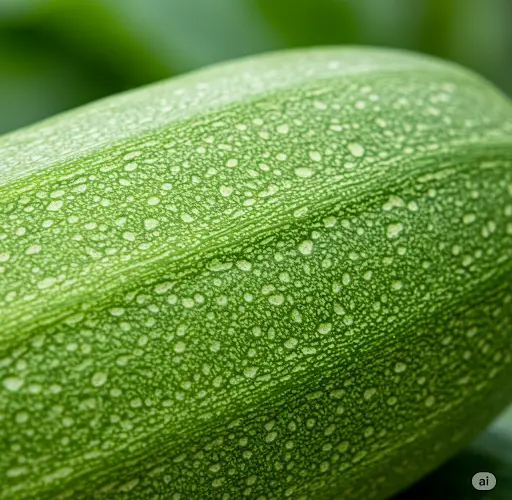Zucchini is one of the most productive and rewarding crops for home gardeners, but it’s also prone to a frustrating issue—yellowing and rotting fruit. If your zucchini starts off strong but then turns yellow and softens before reaching full size, you’re not alone. This common problem can ruin your harvest if not addressed quickly.
Fortunately, there are clear causes and reliable solutions. With the right approach, you can prevent yellowing and rot, save your plants, and enjoy a healthy, abundant zucchini crop.
Why Zucchini Turns Yellow and Rots
The two main reasons zucchini fruits yellow and rot prematurely are pollination failure and moisture-related issues, though diseases and nutrient imbalances can also play a role. Understanding these causes is the first step toward prevention and treatment.
1. Incomplete or Failed Pollination
Zucchini plants produce both male and female flowers. For fruit to develop properly, pollen must travel from the male flower to the female. When pollination is incomplete or doesn’t happen at all, the tiny fruit behind the female flower may start to grow but soon yellows, shrivels, and falls off.
How to Improve Pollination:
-
Hand Pollinate: Use a small brush or cotton swab to transfer pollen from a male flower (with a thin stem) to a female flower (with a baby zucchini at the base).
-
Attract Pollinators: Plant nectar-rich flowers nearby, such as marigolds, borage, or lavender, to draw bees and butterflies into the garden.
-
Avoid Pesticides: Many insecticides harm beneficial pollinators. Opt for natural pest control methods instead.
2. Blossom-End Rot
Another common culprit is blossom-end rot, which starts at the end of the fruit and causes it to turn dark, soft, and mushy. This isn’t a disease but a physiological condition caused by calcium deficiency or uneven watering.
Prevention Tips:
-
Water Consistently: Zucchini needs 1 to 1.5 inches of water per week. Avoid allowing the soil to dry out completely, then soaking it all at once. This disrupts nutrient uptake.
-
Mulch: A layer of straw or grass clippings helps retain soil moisture and regulate temperature.
-
Check Soil Calcium: If your soil lacks calcium, consider adding crushed eggshells, agricultural lime, or gypsum. A soil test will confirm whether you have a calcium deficiency.
-
Avoid Over-Fertilizing with Nitrogen: Too much nitrogen encourages leafy growth at the expense of fruit development and can inhibit calcium absorption.
3. Poor Air Circulation and Excess Moisture
Zucchini plants love warmth but dislike soggy conditions. Overhead watering, tight spacing, and heavy rainfall can lead to fungal issues like gray mold (Botrytis) or powdery mildew, which weaken the plant and damage developing fruit.
Solutions:
-
Water at the Base: Always water the soil, not the leaves. Drip irrigation or soaker hoses are ideal.
-
Thin Plants: Ensure proper spacing between plants (at least 24–36 inches apart) to promote air circulation.
-
Remove Affected Fruit and Leaves: If you notice any fruit beginning to rot, remove it immediately. Trim any overcrowded or moldy leaves to improve airflow.
4. Disease and Pests
Fungal diseases and insect pests like squash bugs or vine borers can also cause yellowing and decay.
-
Monitor for Pests: Check stems and the underside of leaves for signs of infestation. Remove eggs and insects by hand.
-
Use Neem Oil or Insecticidal Soap: These are effective, natural treatments for many soft-bodied insects and fungal issues.
-
Practice Crop Rotation: Avoid planting zucchini or other squash in the same spot year after year to reduce disease buildup in the soil.
5. Nutrient Deficiency
Besides calcium, other nutrient imbalances—especially a lack of phosphorus or potassium—can impact fruit development and plant health.
Feed Your Plants Wisely:
-
Use a balanced fertilizer or compost rich in phosphorus and potassium.
-
Avoid over-reliance on high-nitrogen fertilizers which promote foliage over fruit.
-
Liquid seaweed or compost tea can provide a gentle, nutrient-rich boost during fruiting.
Final Thoughts
Yellowing and rotting zucchini doesn’t mean your crop is doomed. In most cases, it’s a fixable problem related to pollination, watering, or nutrition. By improving pollination, maintaining steady moisture, ensuring proper soil nutrients, and keeping plants healthy and well-spaced, you can stop the rot and enjoy a steady stream of delicious zucchini all season long.
With just a few proactive steps, your zucchini plants will thrive—and so will your harvest.



